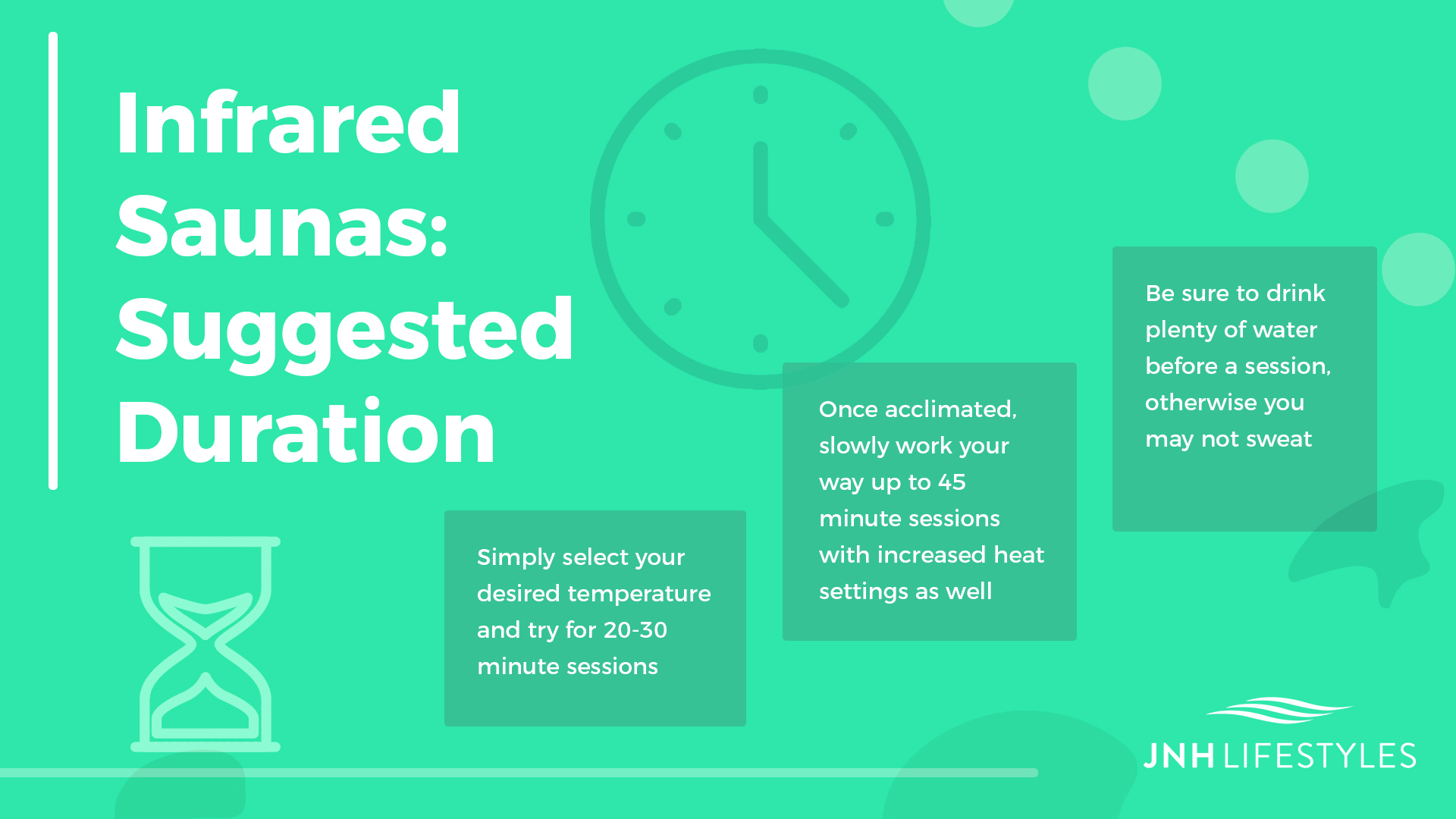How Long Should an Infrared Sauna Session Be?
For many people, a sauna is an invaluable part of their daily routine. They use it after a workout, in the morning before going to work, and when they need to sweat out toxins [1]. This is a practice that has turned into a routine for sauna-aficionados, who sometimes spend considerable amounts of time and money on spas or well-equipped gym centers offering this service.
Spending time in a sauna of any kind is not just about stripping and going in. You need to follow certain rules to be safe and have a comfortable stay inside the booth. One of the most important questions people like to ask is how long they should stay in a sauna. Unfortunately, the answer to this is not simple and depends on many other circumstances. One of them is knowing the differences between variations of saunas, as well as which one is the best for you. So, let’s discover this together.
A Brief Overview Of Types Of Saunas
The most famous type that everyone knows about is the Finnish or traditional sauna. This is the one with a bucket of water, a ladle and heated rocks. To create steam and control the humidity in the booth, you need to sprinkle a ladle or more of water over the rocks. The more steam you create, the higher the humidity will be. Alternatively, if the humidity is low, then the temperature inside the Finnish sauna will be higher.
Conversely, a dry sauna also uses heated rocks, only without adding water to create steam. Because of this, it's a low humidity sauna and you will commonly find it in a gym. While you can add water over the rocks of your own volition, you should follow proper etiquette and ask other users before you do it.A steam bath is the most humid of all saunas, sometimes reaching 100% humidity. Although its temperature is among the lower ones with 120°F, that much humidity makes it feel hotter inside.
When it comes to infrared saunas, it's the most distinctive of all. It uses infrared light to heat the body from the inside, with a minimal rise in cabin temperature. Only 20% of all heat goes to the air inside the sauna, while the other 80% is directed to the body. There is no steam, no humidity, no dry air, and no uncomfortable temperature inside the booth.
The Consequences Of Staying In An Infrared Sauna Too Long
No doubt using a sauna can have health benefits [2]. Some types of saunas may be better than others, but they can all carry certain consequences if you don't respect recommendations by the medical community and manufacturer. Today, infrared saunas are the most popular type of these wellness amenities. Even though they're more comfortable than others and considered safe for most people, they are still not without consequences and risks.

The first thing you need to do is to check your overall health. Some medications, implants and implanted medical devices, and underlying medical conditions can affect your infrared session. It’s always best to consult with your doctor before exposing yourself to the heat from an infrared sauna. Some conditions may lead to more dehydration and overheating, like kidney disease and low blood pressure. People who take medicines for the elimination of excess water from the body can also experience signs of dehydration, such as dizziness and fatigue.
How Long Should An Infrared Sauna Session Last?
Unlike other saunas, you can control the temperature inside the booth which normally ranges from 100°F to 140°F. For the sake of comparison, a traditional sauna can develop 180°F to 200°F inside the booth, which is not only uncomfortable but also makes the air stuffy and hard to breathe. For this reason, you can spend more time inside an infrared sauna without feeling suffocated.
The best time to use an infrared sauna is in the morning or before bed, but that is not to say that other periods are bad or harmful. During your first session, don’t stay longer than 20–30 minutes, or even less if you start feeling nauseous or dizzy. After you get used to infrared heat, you can stay no longer than 45 minutes. When it comes to frequency, you can use the infrared sauna every day, but for starters, you can go with 3–4 times a week until you feel ready to advance to daily sessions.
Since you may not sweat as much as you expect during your first few sessions, you can be tempted to stay longer than recommended. Remember that some people sweat more or less than others, which is the case here as well. Also, an infrared sauna can increase your heart rate as though you are under physical stress [3]. If you feel uncomfortable or light-headed because of this, it’s best to cut your infrared session short and continue another day.
All Things Considered
It's best to treat an infrared sauna session as you would any new habit in your life – one step at a time. This way, the body will slowly get used to the new environment and have sufficient time to acclimatize. Also, you can listen to your body and pay close attention to how you react to the infrared treatment. If you follow advice from your physician and listen to your body, you can find the ideal infrared sauna for you and enjoy all its benefits.

Resources:
[1] Genuis, SJ, et al. (2011). “Blood, urine, and sweat (BUS) study: monitoring and elimination of bioaccumulated toxic elements.” ncbi.nlm.nih.gov, The National Center for Biotechnology Information, August 2011, https://www.ncbi.nlm.nih.gov/pubmed/21057782.
[2]Hussain, J and Cohen, M. (2018). “Clinical Effects of Regular Dry Sauna Bathing: A Systematic Review.” ncbi.nlm.nih.gov, The National Center for Biotechnology Information, April 2018, https://www.ncbi.nlm.nih.gov/pmc/articles/PMC5941775/.
[3] Beever Richard. (2009). “Far-infrared saunas for treatment of cardiovascular risk factors.” ncbi.nlm.nih.gov, National Center for Biotechnology Information, July 2009, https://www.ncbi.nlm.nih.gov/pmc/articles/PMC2718593/.

